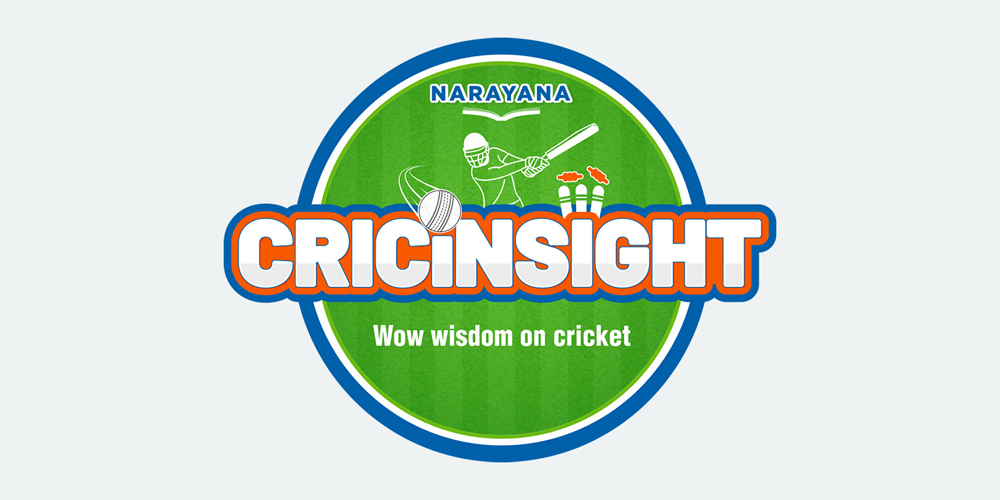Cricket is not just a sport in India; it’s life; it runs in the veins of millions of people. It is all but natural that, apart from watching every game, whether T20, ODI, or test, we want to learn more about its history, its journey, or some of its most unique records. With the 2023 ODI Cricket World Cup currently underway in India, we at Narayana Schools are here with some of the most fascinating facts about cricket world cups so that you not only enjoy the game but also learn more about it.
Now we know that some of the most dedicated cricket enthusiasts among you might already know who is the highest wicket taker or the run scorer in the World Cup or which team won in what year, but we are here with some lesser-known but interesting facts that are sure to amaze you.
1. The 1975 inaugural men’s ODI Cricket World Cup was not actually the first-ever cricket world cup. Remarkably, two years prior, in 1973, England hosted the inaugural women’s cricket world cup.

2. England hosted the first three World Cups; it was not until 1987 that the World Cup moved out of the island nation to India and Pakistan. It has since been hosted by a different country every year on a rotational basis.
3. The year 1992 was one of the most significant years for ODI cricket world cups as it witnessed many visible changes, including a shift from traditional white jerseys that we today only associate with test matches to coloured ones, the adoption of a white cricket ball, and the introduction of day-night matches.

4. The 1983 ODI Cricket World Cup was the last world cup to feature the 60-over ODI cricket format. Hence, India is now the only country to have won both the 60-over and 50-over one-day international world cups.

5. Australia is not only the country with the most titles won (5); they are the only country to win the three ODI World Cups consecutively in 1999, 2003, and 2007. They broke the record previously held by the West Indies when they won the 2007 World Cup by defeating Sri Lanka in the final. Earlier, the West Indies won two consecutive world cups in 1975 and 1979 under their iconic captain, Clive Lloyd.

6. The 2023 ODI Cricket World Cup will be the first ever to be held without the West Indies participating in it. Once the absolute powerhouse of cricket, which has produced some of the greatest players to ever play this game, the West Indies failed to qualify for this World Cup when it lost the qualifiers against Scotland.
7. For the 2023 ODI World Cup, a total of 32 teams participated in the qualification process. The rigorous process included three different leagues and took three years, and in the end, 10 teams qualified. While it is quite normal for test-playing nations such as India, Australia, England, etc. to qualify for the World Cup, the process is extremely hard and competitive for non-test-playing nations.
This year, Zimbabwe, The Netherlands, Scotland, Oman, Nepal, Sri Lanka, the USA, UAE, the West Indies, and Ireland participated in the qualifiers, and only Sri Lanka and The Netherlands made it to the World Cup.
8. Following many firsts, the 2023 ODI Cricket World Cup is also set to introduce a rule where no venue will be allowed to have boundaries less than 70 m in any direction from the striker’s end. Other than that, there is also no soft-signal rule or boundary count rule in this year’s edition.
9. The winning team does not get to take the original trophy home. Since 1999, just like the football world cup, there has been only one permanent trophy for the ODI cricket world cup. The trophy given to the winning team in each world cup after 1999 is a replica of the original trophy, which is taken back to the headquarters once the tournament is finished.
Other than these interesting facts, there are some common questions that often confuse fans. These are:
1. Why is the World Cup held every four years?
The World Cup occurs after 4 years to allow ample time for the completion of qualifier tournaments and playoffs involving national teams. Furthermore, this four-year cycle grants the host nation sufficient time to strategize and plan different aspects of the tournament and prepare for the accommodation of millions of fans.
2. Where does World Cup prize money come from?
The earnings from the international cricket governing body are used to fund World Cup prizes. High bids for television, marketing, and licencing rights to important cricket tournaments that they organise throughout the world are what bring in these funds.
3. What is the shortest World Cup match in history (by balls bowled)?
Sri Lanka vs. Canada, 2003 ODI World Cup, 140 balls
From its inception in 1975 to the present day, this prestigious tournament has continued to evolve and fascinate cricket enthusiasts worldwide. Since the introduction of coloured jerseys and day-night matches in 1992, each world cup has brought its own unique charm to the cricketing world. The legendary performances, records broken, and unforgettable matches will always be there in our memories. Whether you’re a passionate cricket fan or new to the game, these facts are surely interesting for everyone.

At Narayana Schools, it is our aim to make education enjoyable by blending it with sports seamlessly. With this vision, we have launched an initiative where learning and cricket intersect—Narayana CricInsight. Follow us on Instagram at https://www.instagram.com/thenarayanagroup/, as Narayana CricInsight is set to unravel even more intricacies of cricket, shedding light on the various elements that contribute to its worldwide appeal, making learning both enjoyable and informative.


important fact, Very nice
I’m not that much of a Online Roulette (https://globalprobonoweek.com/online-roulette.html) reader to be honest but your blogs really nice,
keep it up! I’ll go ahead and bookmark your site to
come back later on. Many thanks